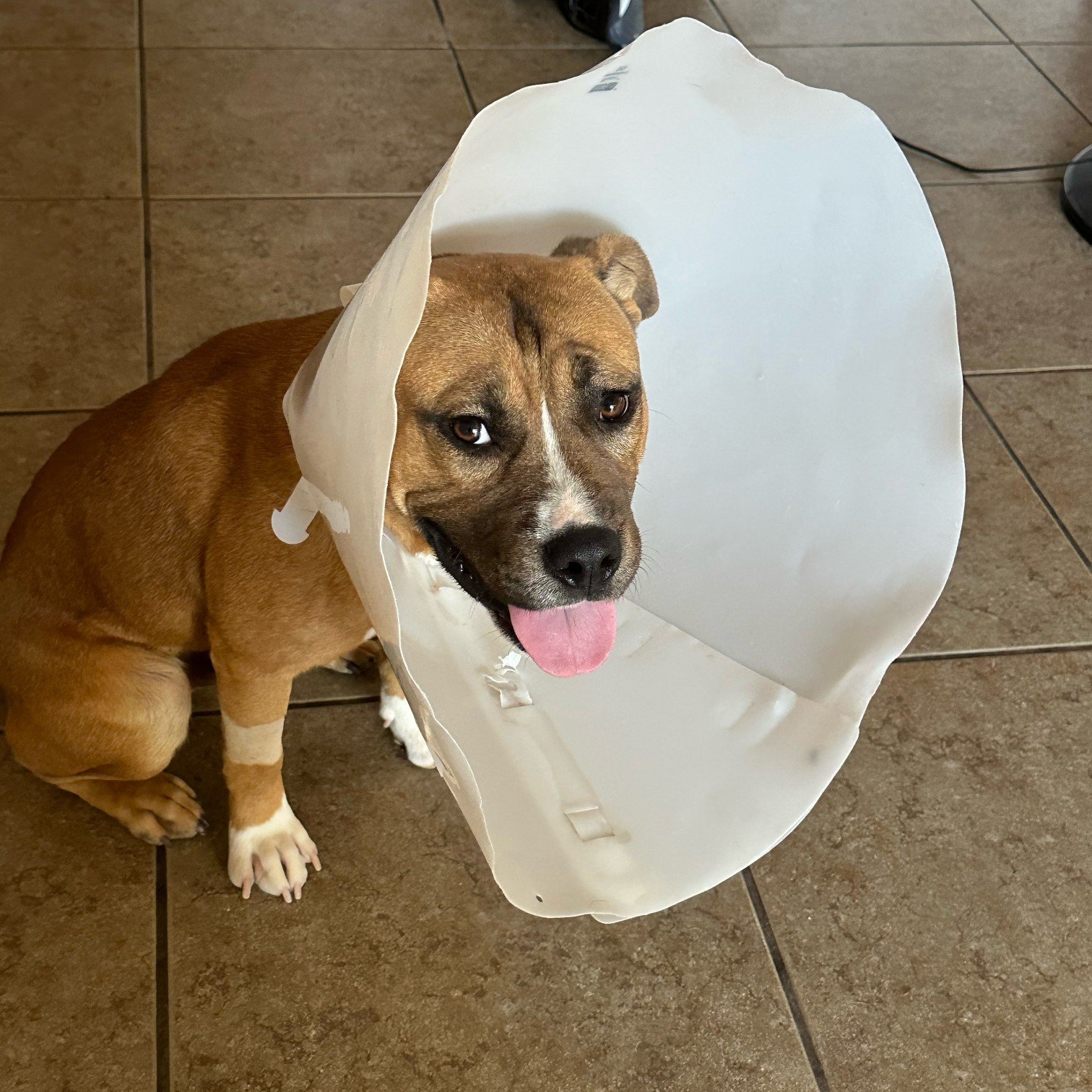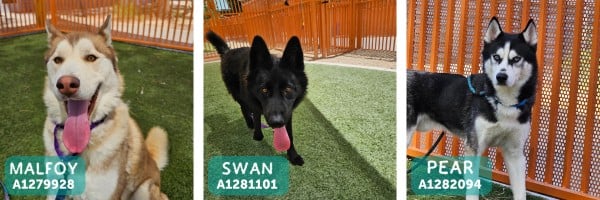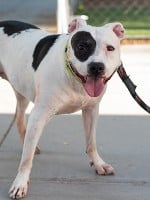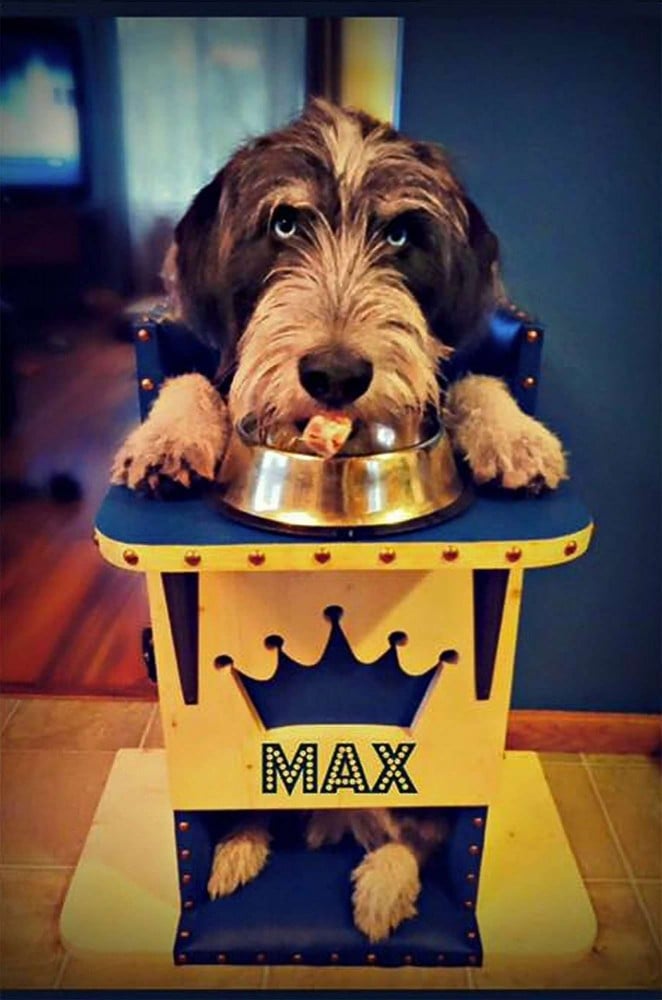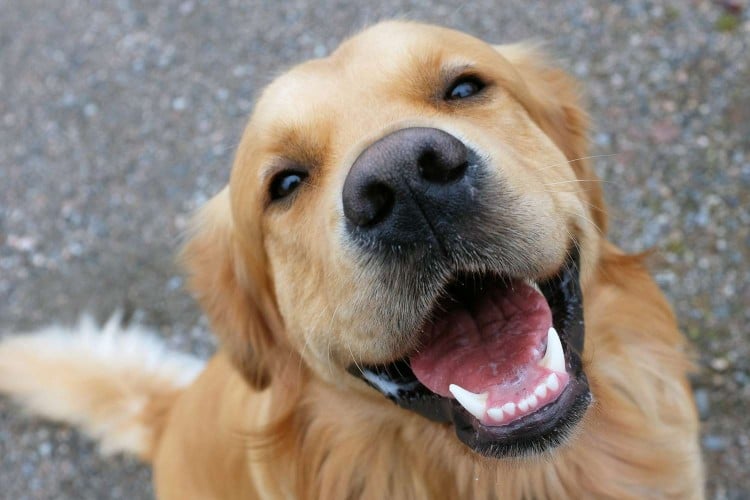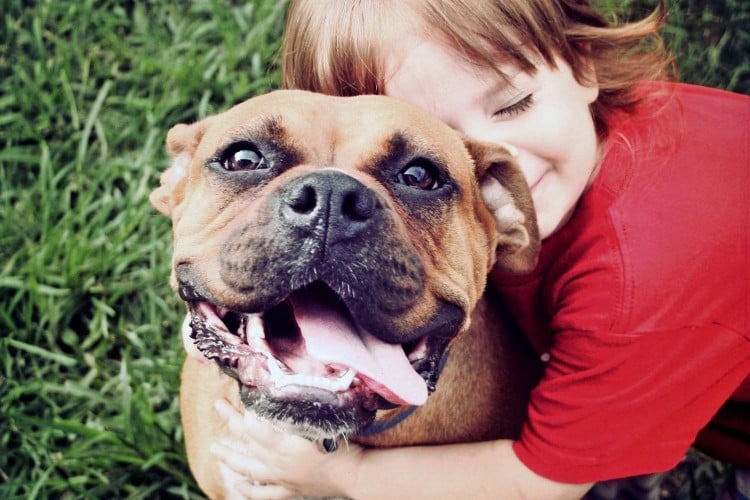Can Dogs Talk? How to Teach Your Dog to Talk With Buttons
Every dog owner has enjoyed conversations with their canine companions. We tell them how our day went, we share our secrets, we comment on their adorable fluffy faces. Our dogs respond with toothy smiles, tail wags, and sometimes licks to the cheek. But when it comes to our dogs talking back to us, we're usually limited to interpreting their canine body language.
On the other hand, maybe you've seen some of those recent popular talking dog videos on TikTok or Instagram where dogs push sound-emitting "buttons" to communicate with their owners. The dog stands next to a row of buttons that have pre-recorded words, pushes one of the buttons with their paw, and words like "more" and "now" are heard. It seems as though these dogs are using human words to tell their dog moms and dads that they want more walkies or need more snacks. But are these button-pushing dogs actually talking? Well, the science is still out on this one—but it's definitely a neat trick you can teach your pup.
If you want to give Spot another way to communicate his needs with you, you can certainly teach your dog to "talk" using word buttons. By using positive reinforcement and a learning technique called shaping, where you teach a behavior bit by bit over time, you can teach any dog this fun skill.
RELATED: 5 Easy Tricks You Can Teach Your Dog at Home
Can Dogs Communicate Like Us?
Canines most definitely can communicate with us and other animals…in a canine way. Dogs tell us how they feel or what they want through their body language and vocalizations. Sometimes those vocalizations even sound like words. However, communication is not the same as speech or even language, and it's important to define which one we're referring to before we can decide if our dogs can do it.
Most often when we say "talking" we are referring to the ability for language. Although our dogs can certainly understand lots and lots of human words, and can learn the meaning of new words quickly (and across contexts), canine research has not yet shown if a dog can make observations, understand spatial relationships, have abstract thoughts, or create narratives—which are all aspects of language.
So, if a dog learns to press word buttons and then presses "outside, toy" we don't know if that's actually a request, an observation, or if it's just the dog pushing random buttons to earn a treat. The story of Clever Hans is a good example of this dilemma. Although Hans was clearly a wonderfully smart horse, it was eventually discovered that when he appeared to do math, read, or perform other amazing mental feats, he was picking up on cues from his teacher—not actually answering the problems himself. His abilities did not prove that he could use "language" the way people do. And science hasn't yet been able to show that dogs possess those higher-level language skills either.
Can You Teach a Dog to Talk?
Teaching a dog to use human words isn't the same as teaching a dog human language, but we can teach them ways to use human words. Dogs are great at building associations and picking up on cues in different contexts to create meaning. Like in the Stella the talking dog videos, we can teach our dogs to press buttons that say things like "outside," "play," or "ouch." From there, it's really up to you to decide if you think you are carrying on a conversation with your doggo.
RELATED: Watch Bunny the Sheepadoodle Talk to Her Owners
How to Teach a Dog to Talk with Buttons
Using pre-recorded buttons you can purchase online or make yourself, you can use positive reinforcement to teach your dog to press those buttons. Follow these steps to get started.
1. Gather Your Supplies
You will need the recordable buttons and plenty of tasty reinforcers. A good reinforcer is something your dog looooves, like a piece of chicken or a soft dog treat. You may also find it helpful to glue your buttons to cut-up foam mats so they don't slip around. And brush up on how to use clicker training for your upcoming lessons.
RELATED: 5 Effective Dog Training Tools Pros Swear By
2. Pick Your Words (and the Buttons)
Start by identifying a word you use with your pet a lot already, like "outside," "sit," or "toy." Record that word into one of the buttons. Spend ample time teaching your dog this one button first before you move on to others
3. Build an Association Between the Button and a Reinforcer
With the button in your hand, or on the floor, begin by pushing the button and then immediately giving your dog that tasty treat. This makes sure the dog knows the button, and the sound, means good things.
4. Build Your Dog’s ‘Targeting’ Skill
Through the learning processes of capturing and shaping, you can teach your dog to target the button (and push it) pretty quickly. If your dog knows how to give "paw" or "high five," hold the button so that when you say the cue, your dog's paw will touch the button. Mark the behavior (with a click or say "yes"), then immediately give a treat.
5. Pair the Button With an Event
Now you can pair the worded button with an action or event. For instance, if you want to teach your dog to use the button to tell you he needs to go outside, cue the dog to push the button right before you open the door to outside (similar to potty training with a bell). The second he is outside, give him a treat.
Once your dog seems to understand and use this button reliably, you can introduce additional buttons recorded with different words/cues. For instance, you could pair a button with a cue or activity such as "play" or "sit," then repeat the lesson above in a variety of contexts. Press the button that says the word, prompt or cue the dog to do the behavior, mark with a clicker, and then immediately provide a treat.
RELATED: How to Teach Your Dog 4 Training Basics
6. Discriminate Between Buttons
Just like when teaching a dog to "sit" versus "down", you have to make sure they can discriminate between cues. To make sure your dog understands the button that says "outside" is not the same as the button that says "toy," be sure to only reinforce the right behavior after the button push. So, if your dog pushes the "outside" button but doesn't go to the door or grabs a toy instead, they may not understand the different buttons yet or the associated activity.
7. Use the Buttons Throughout the Day
Once your dog is regularly pushing the buttons and you have paired them with events, you can start using them throughout your day. Instead of providing a treat each time your dog targets the button, respond to the button. For example, if your dog uses the button that says "outside", tell him "good boy" and immediately let him outside.
A good dog owner is always paying attention to their dog's body language, ensuring their dog is happy and relaxed. Paying close attention to that form of canine talking is crucial to making your dog happy and healthy.
While it's too early for science to know yet whether dogs are participating in language when they use buttons like this, one thing is for sure: The activity is a great way to stimulate your dog's brain, and provides a way to bond and learn alongside your canine companion.

